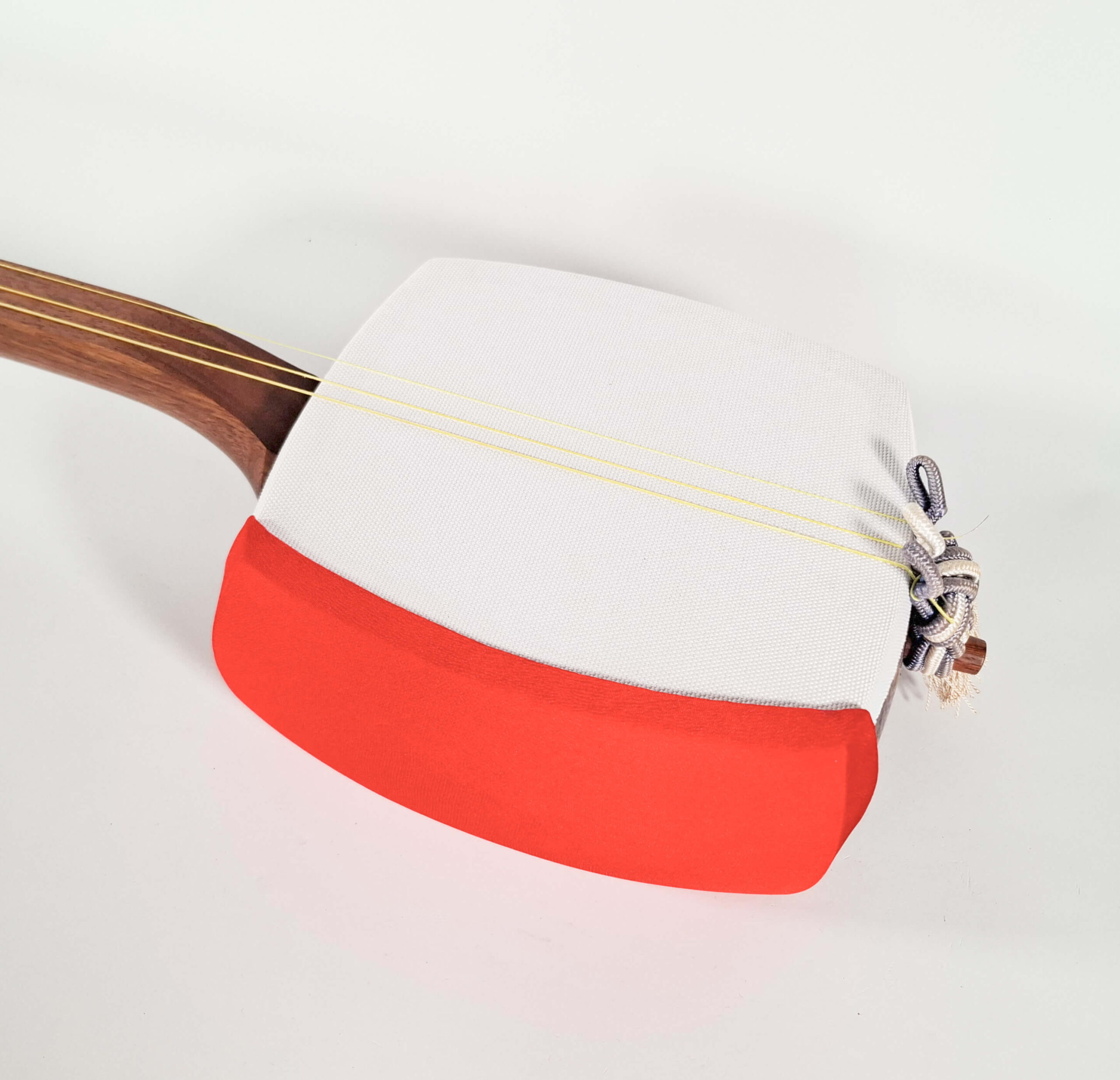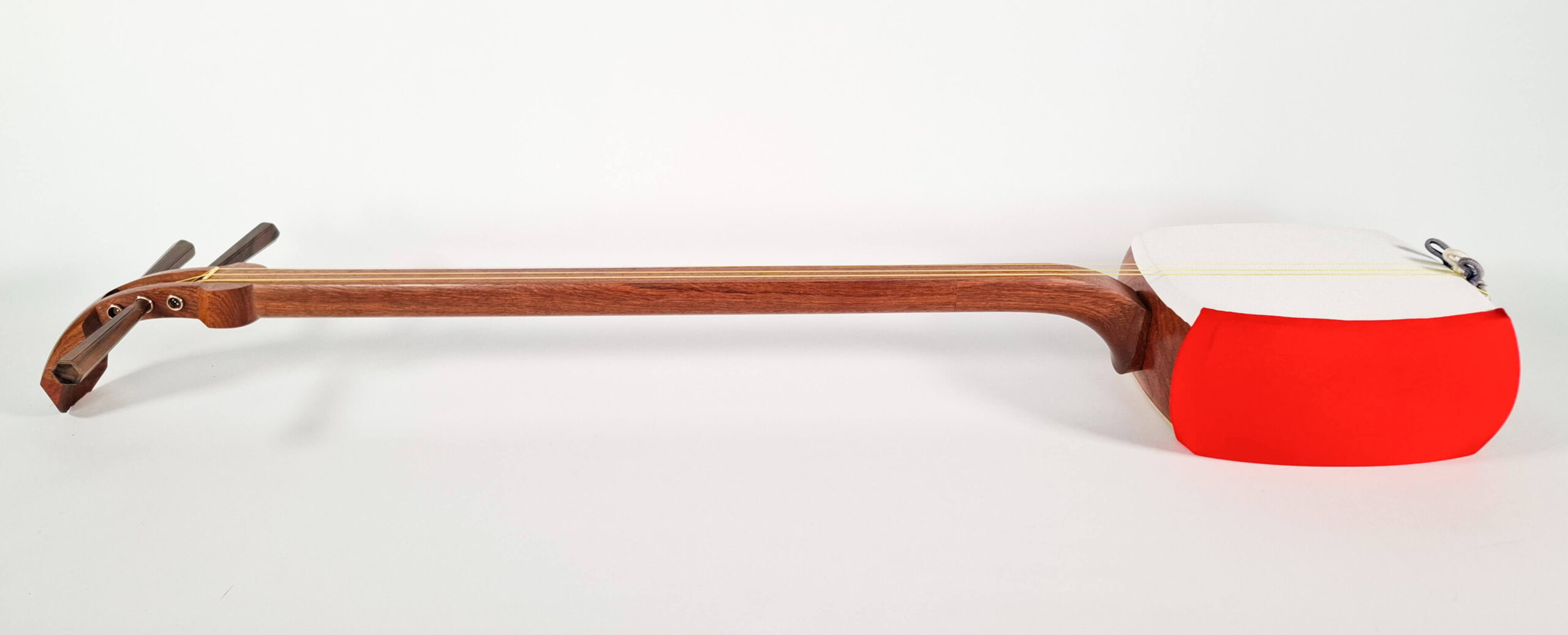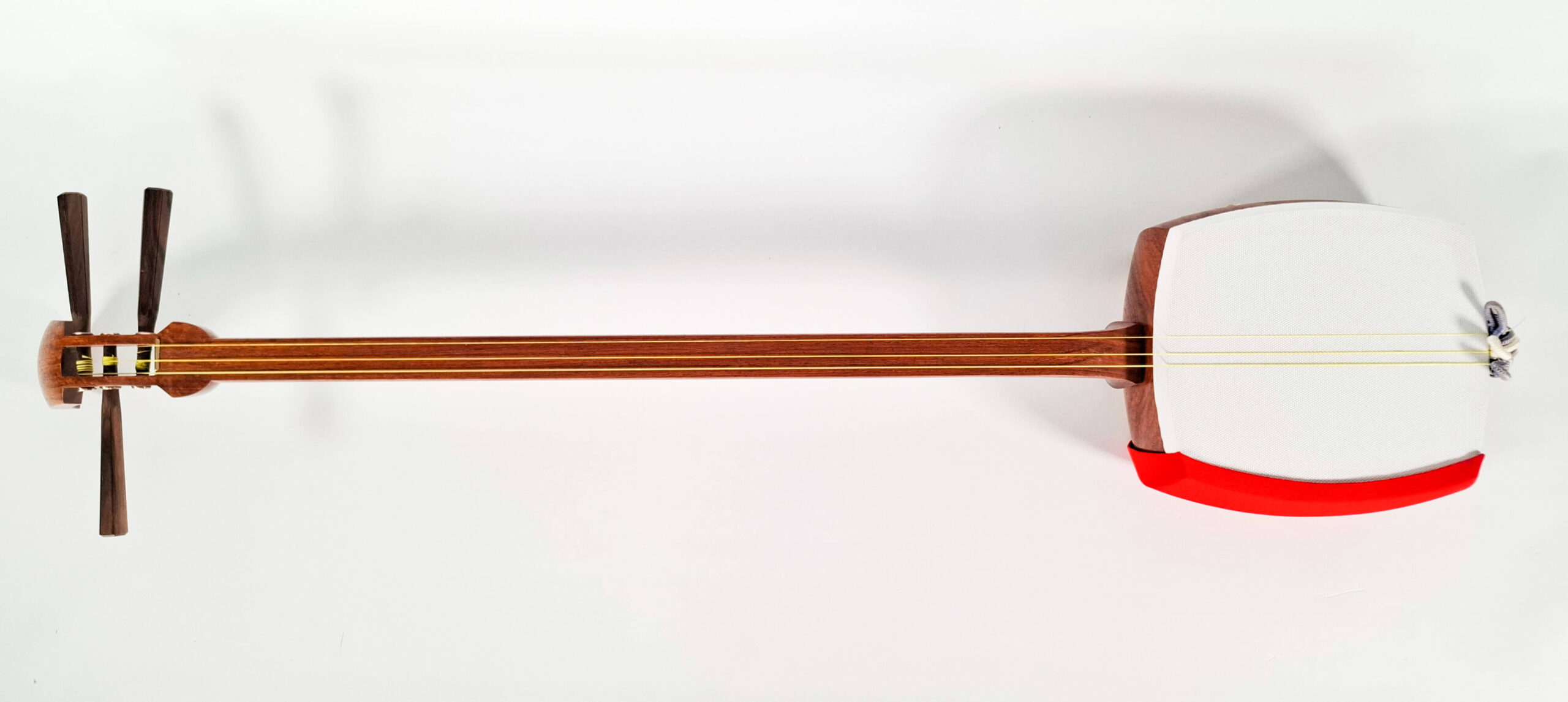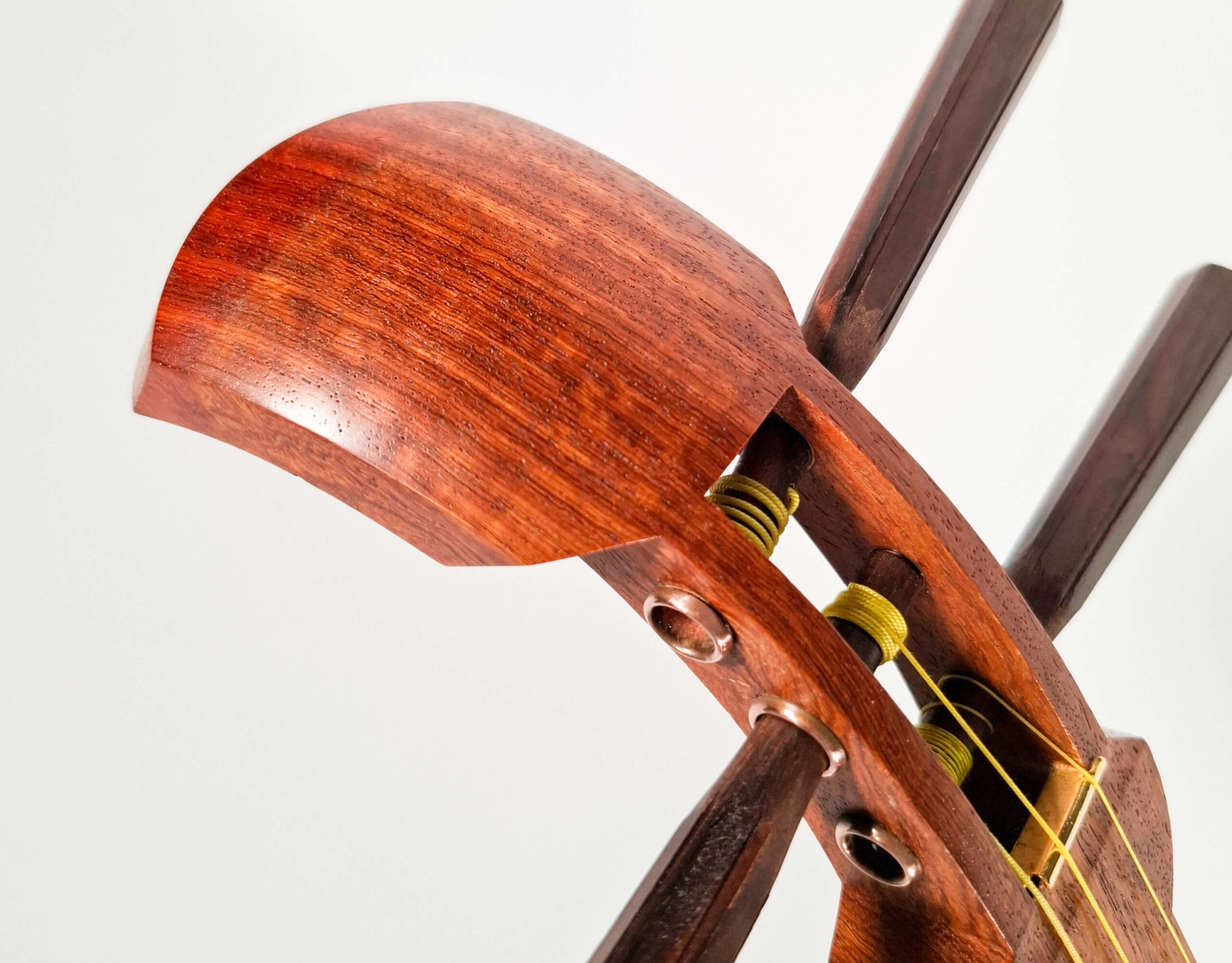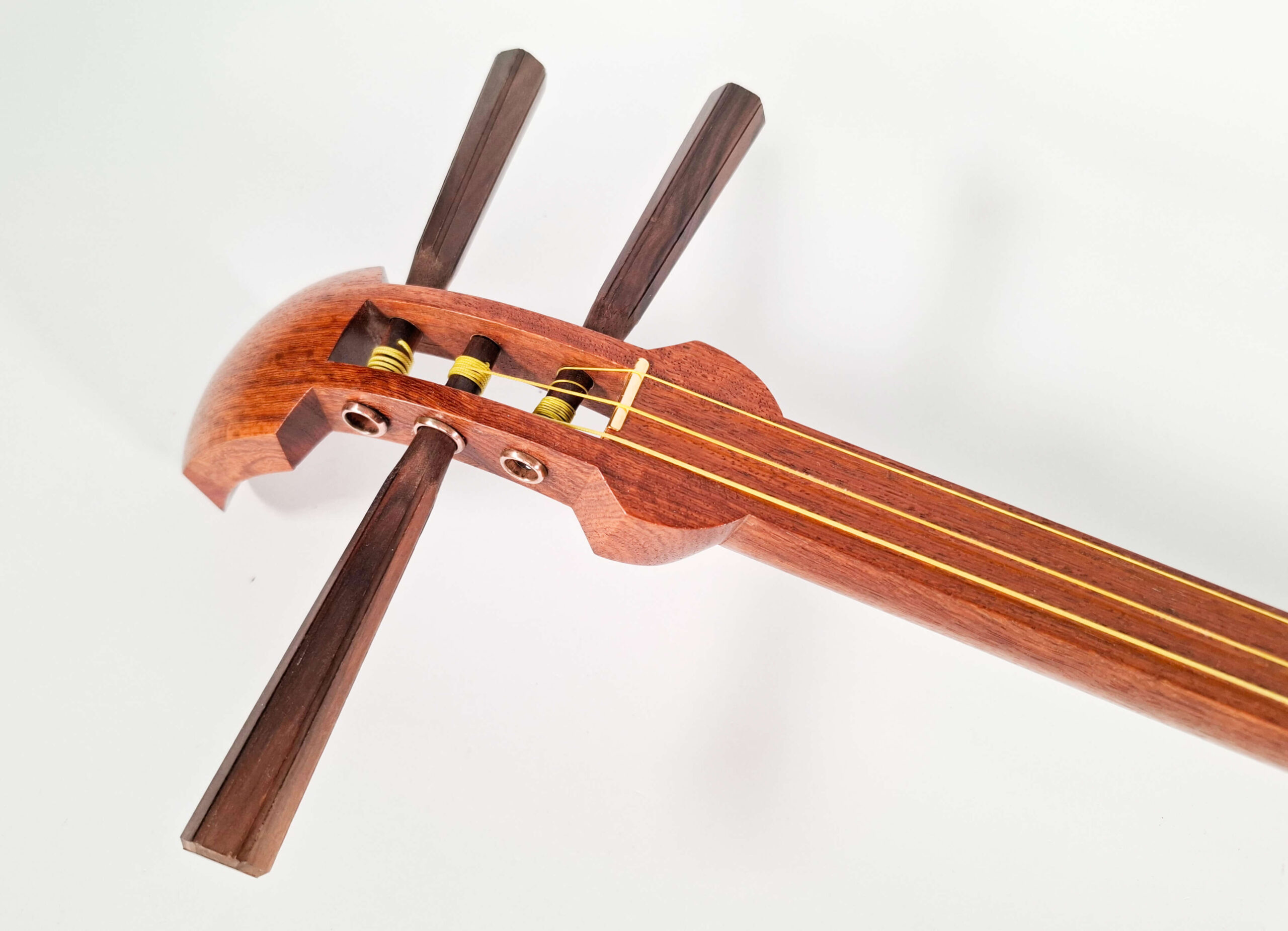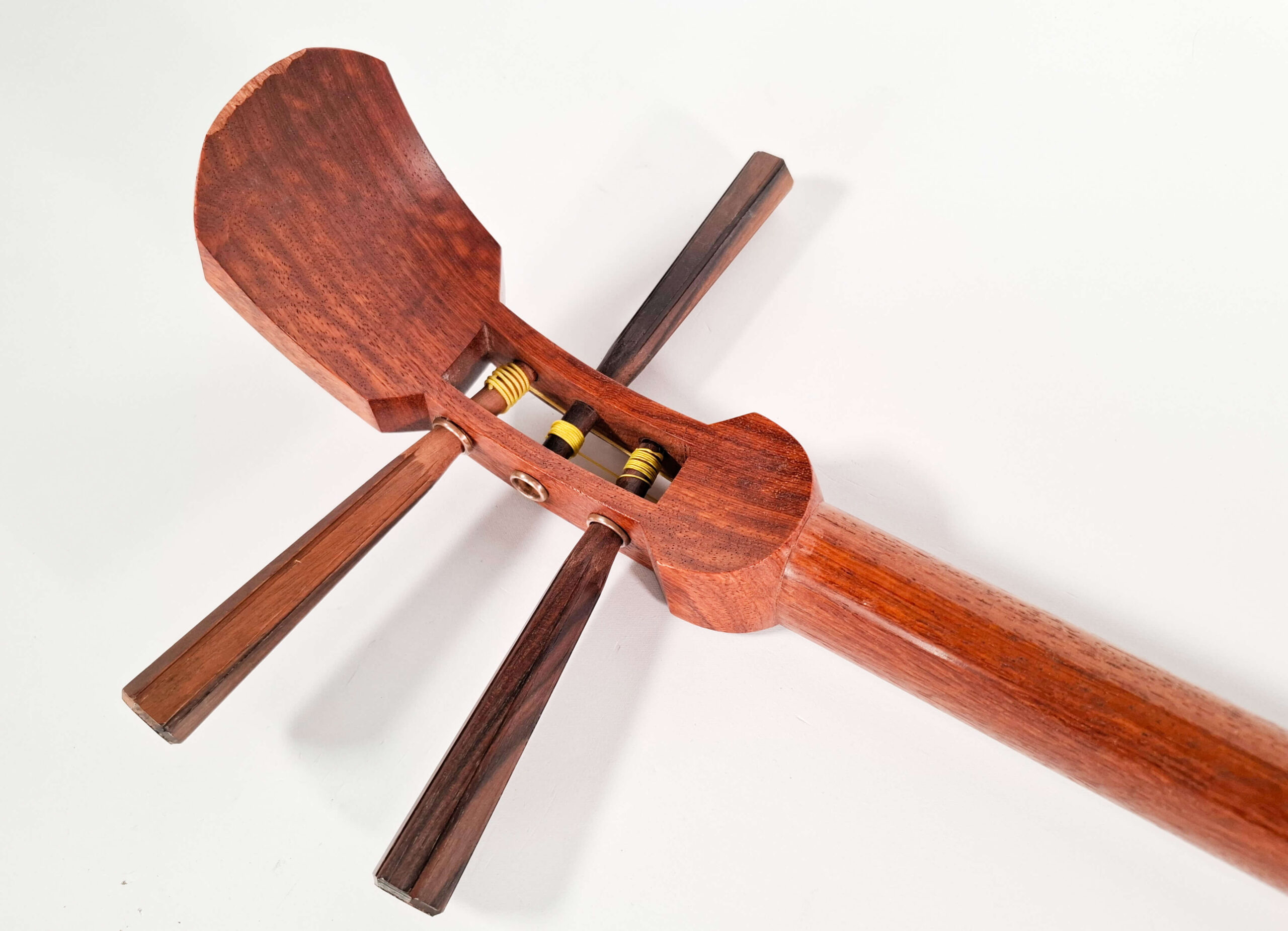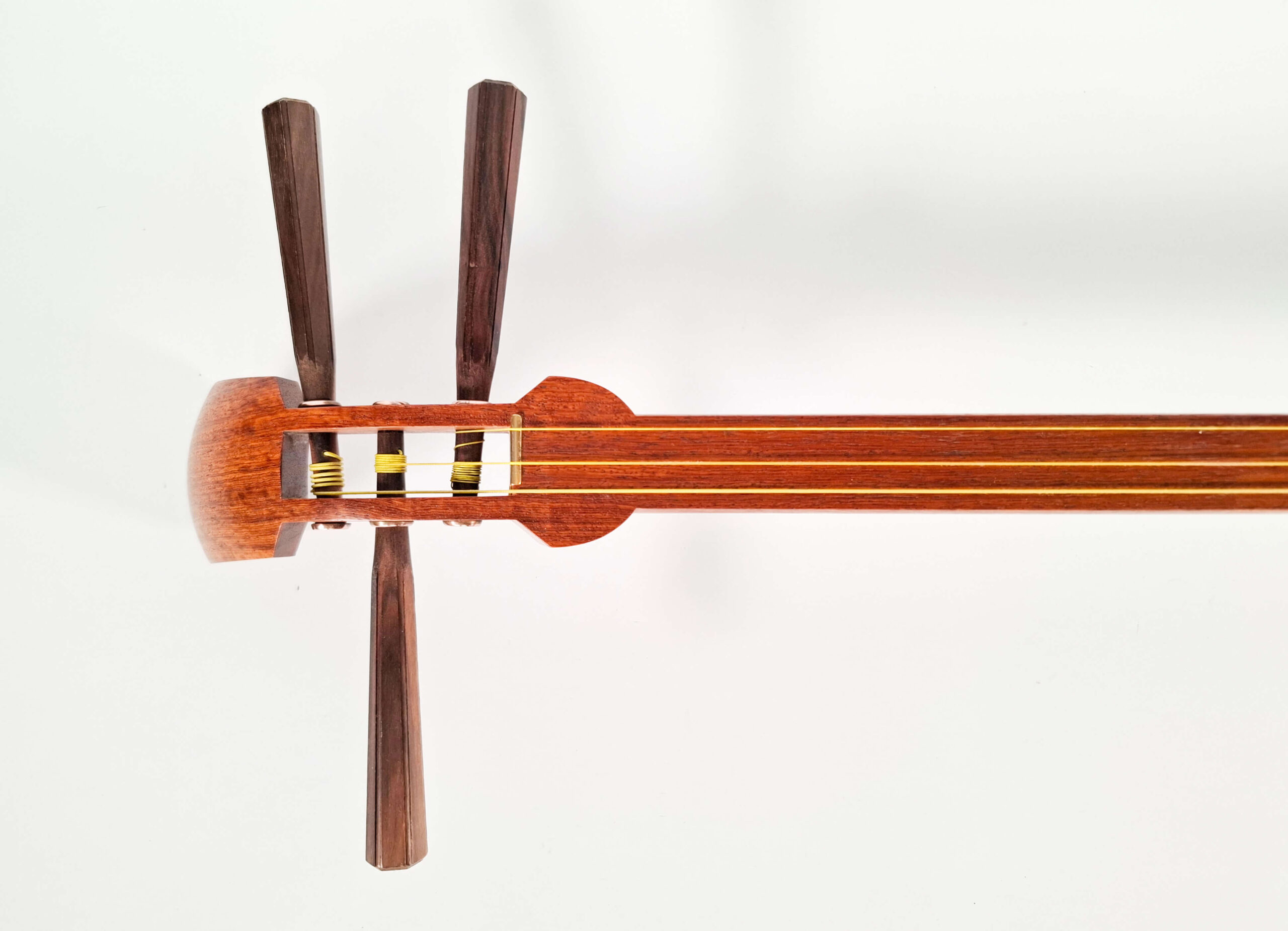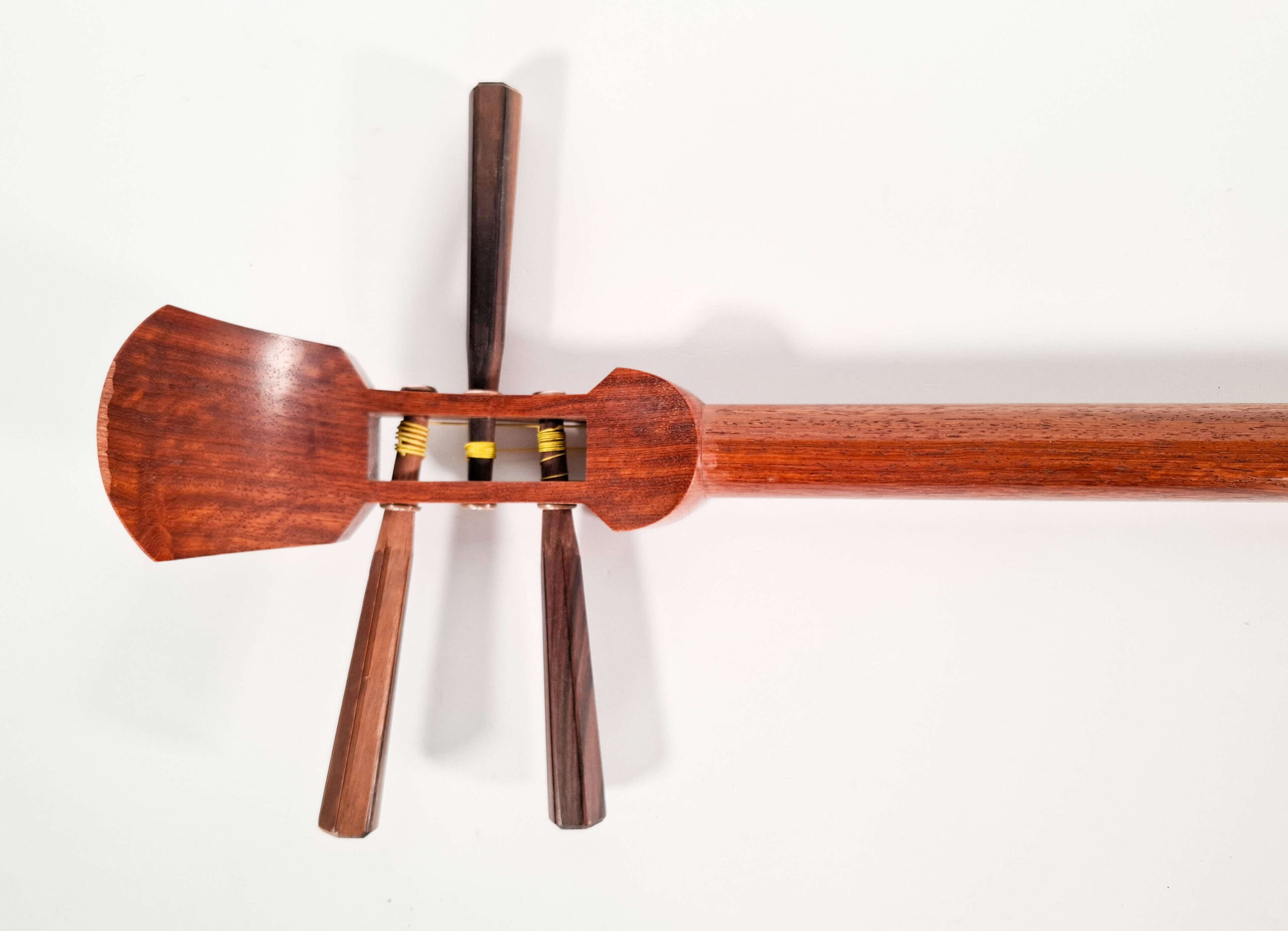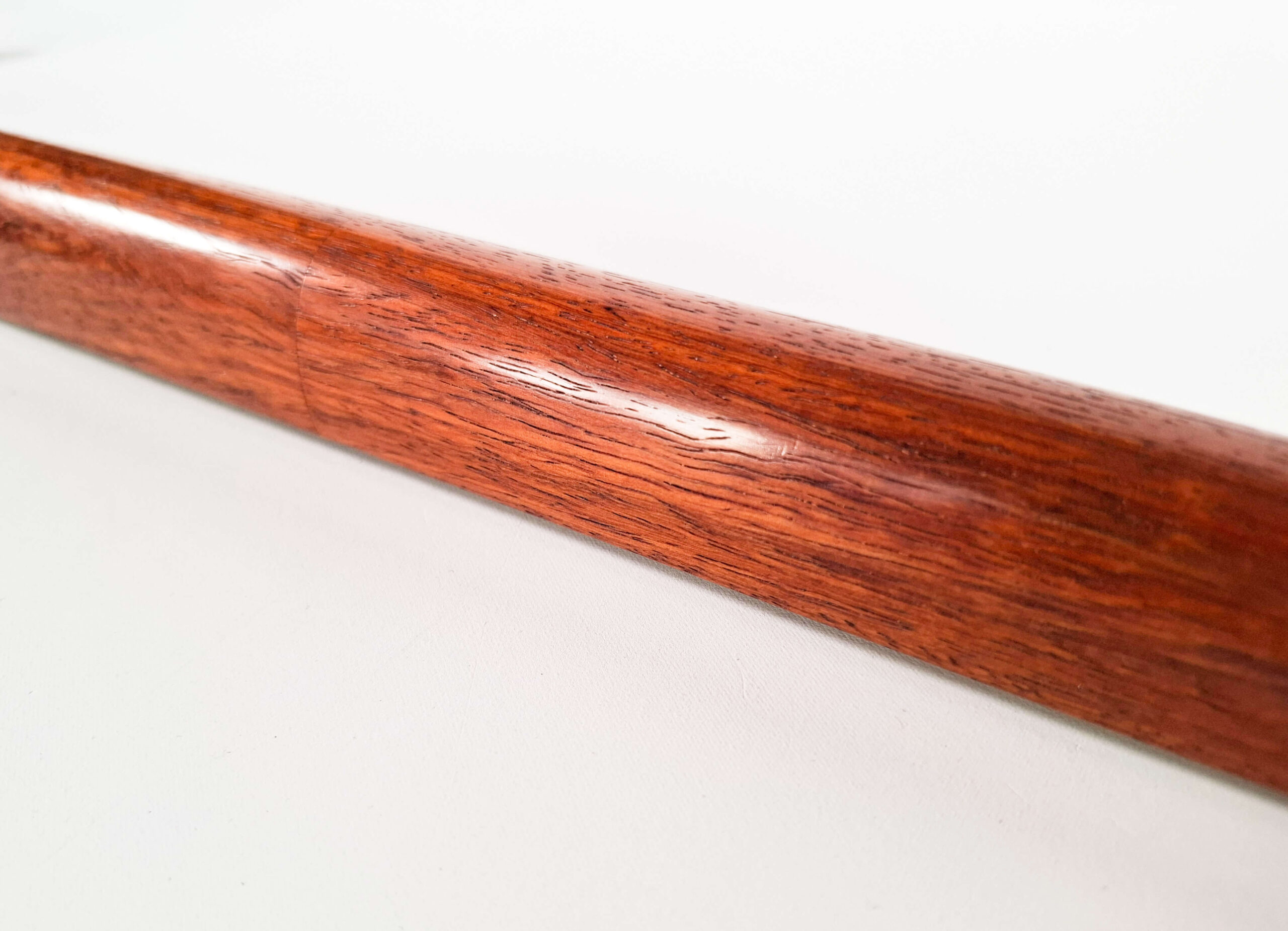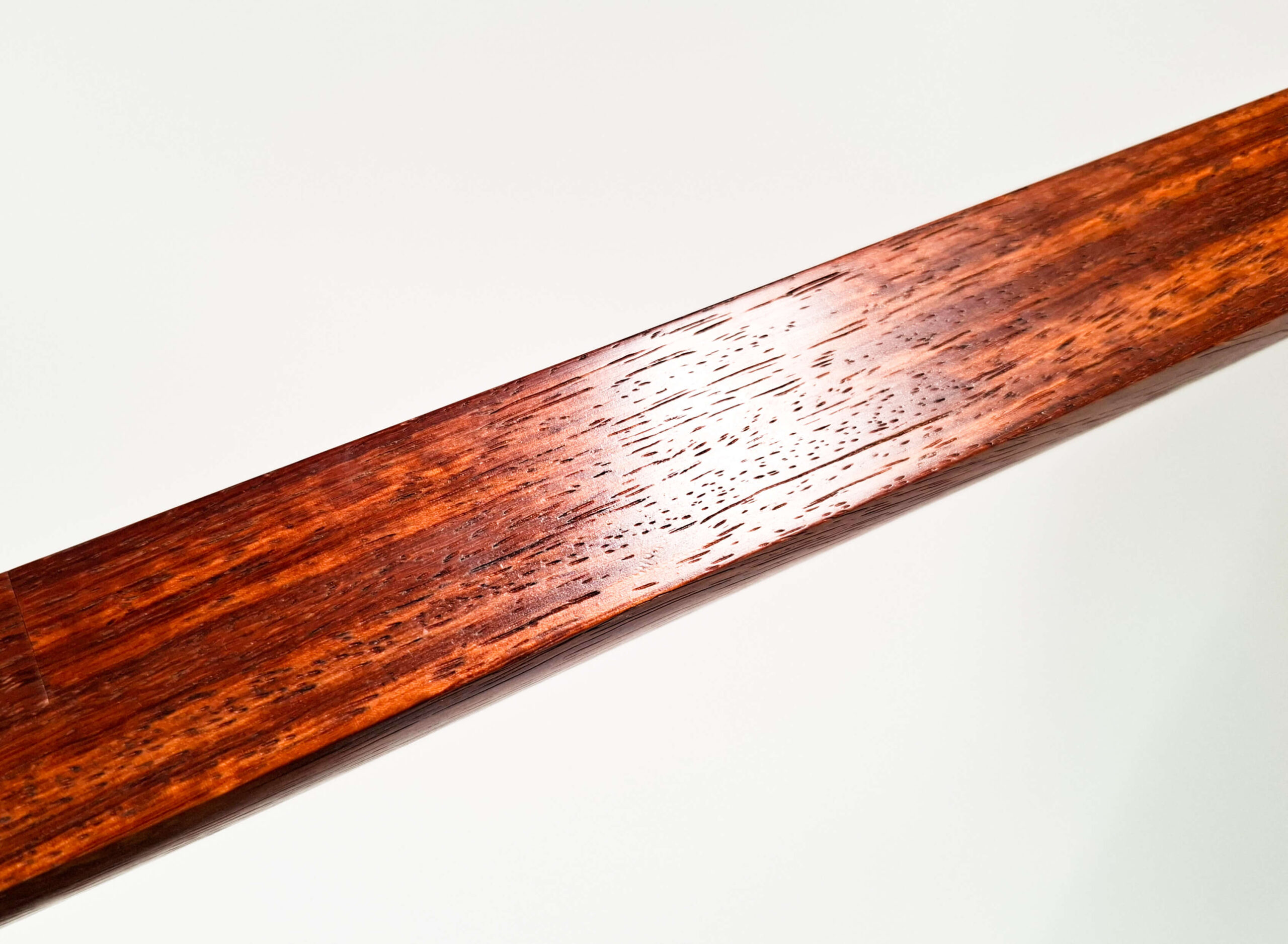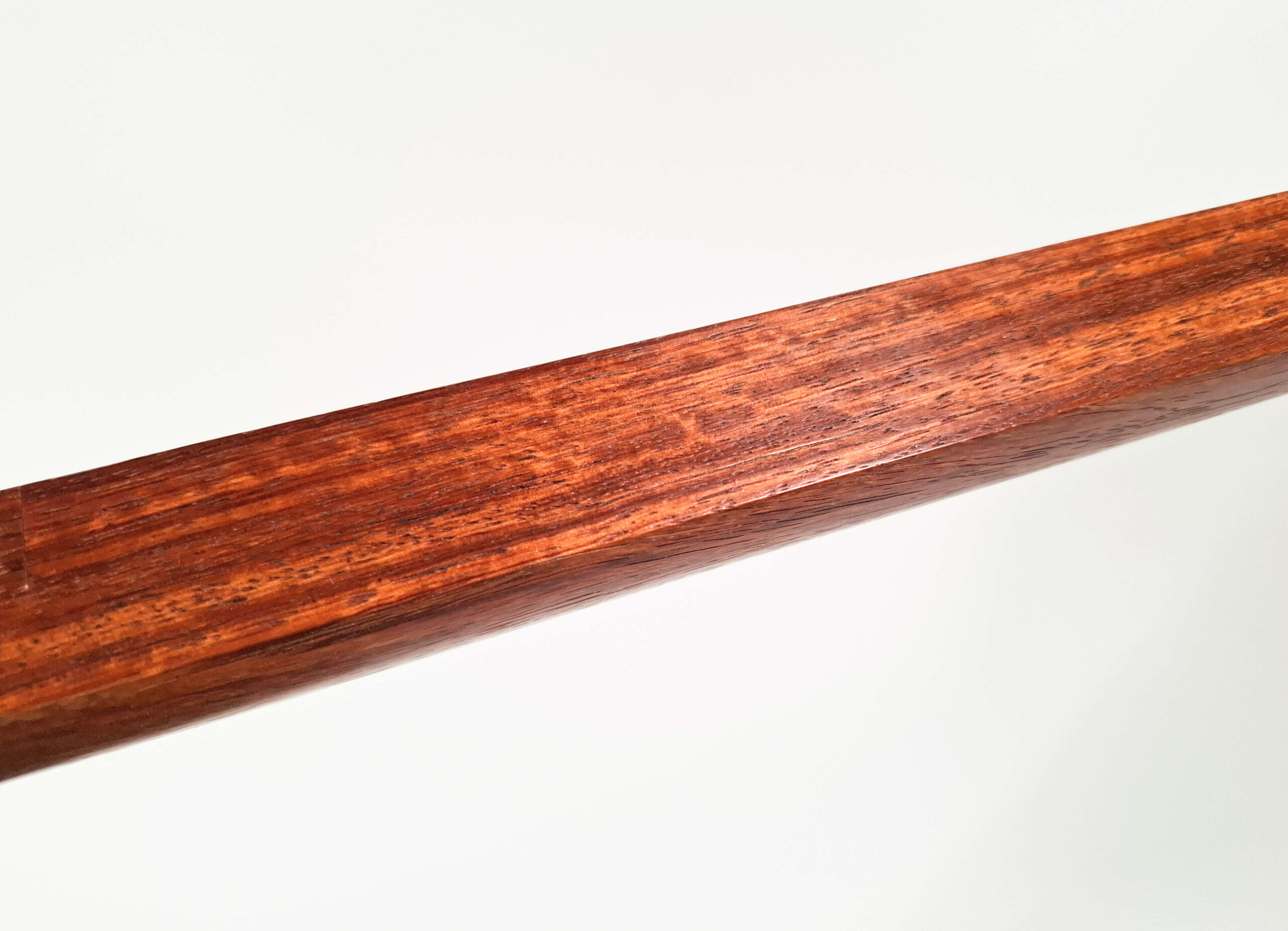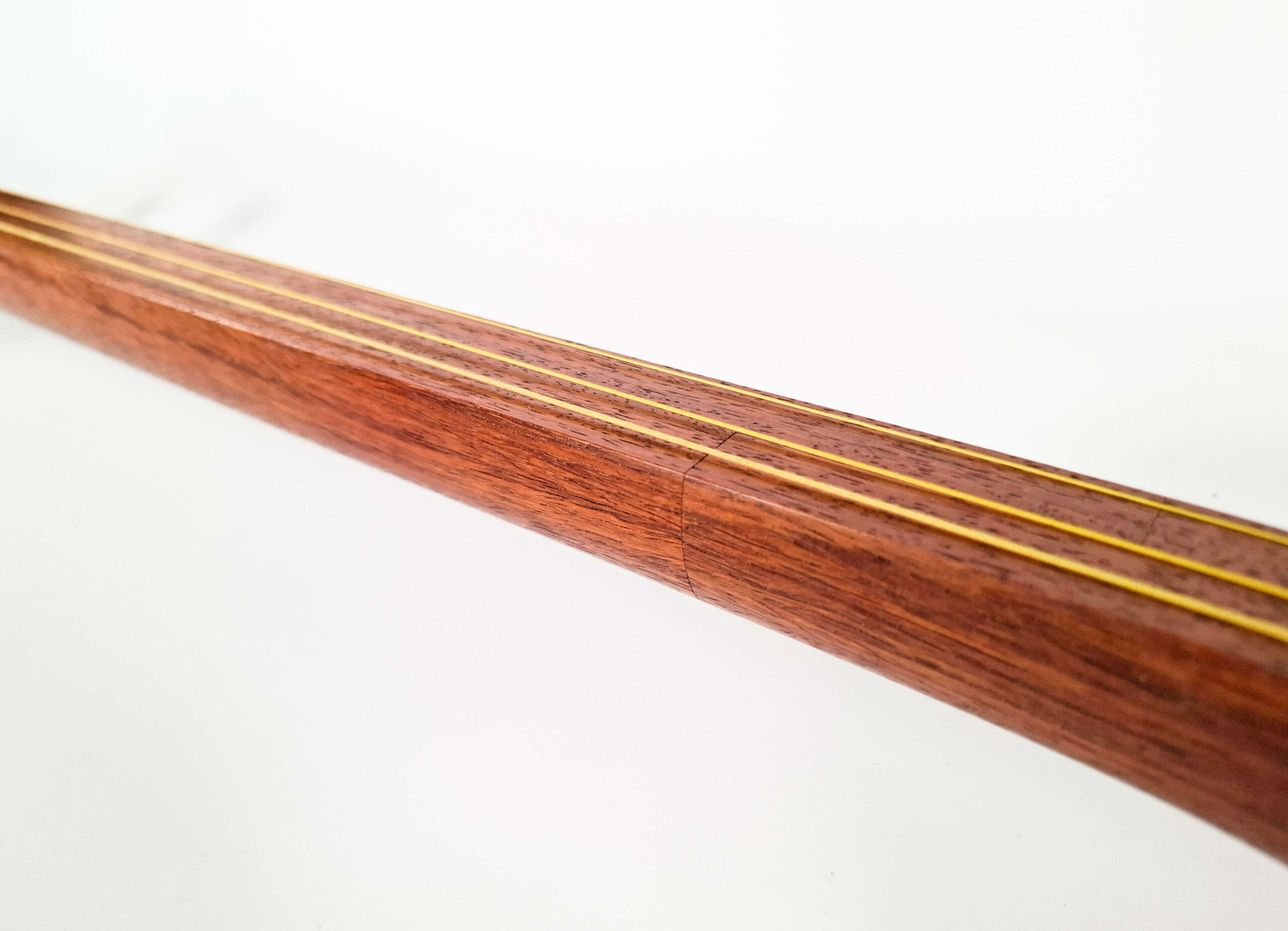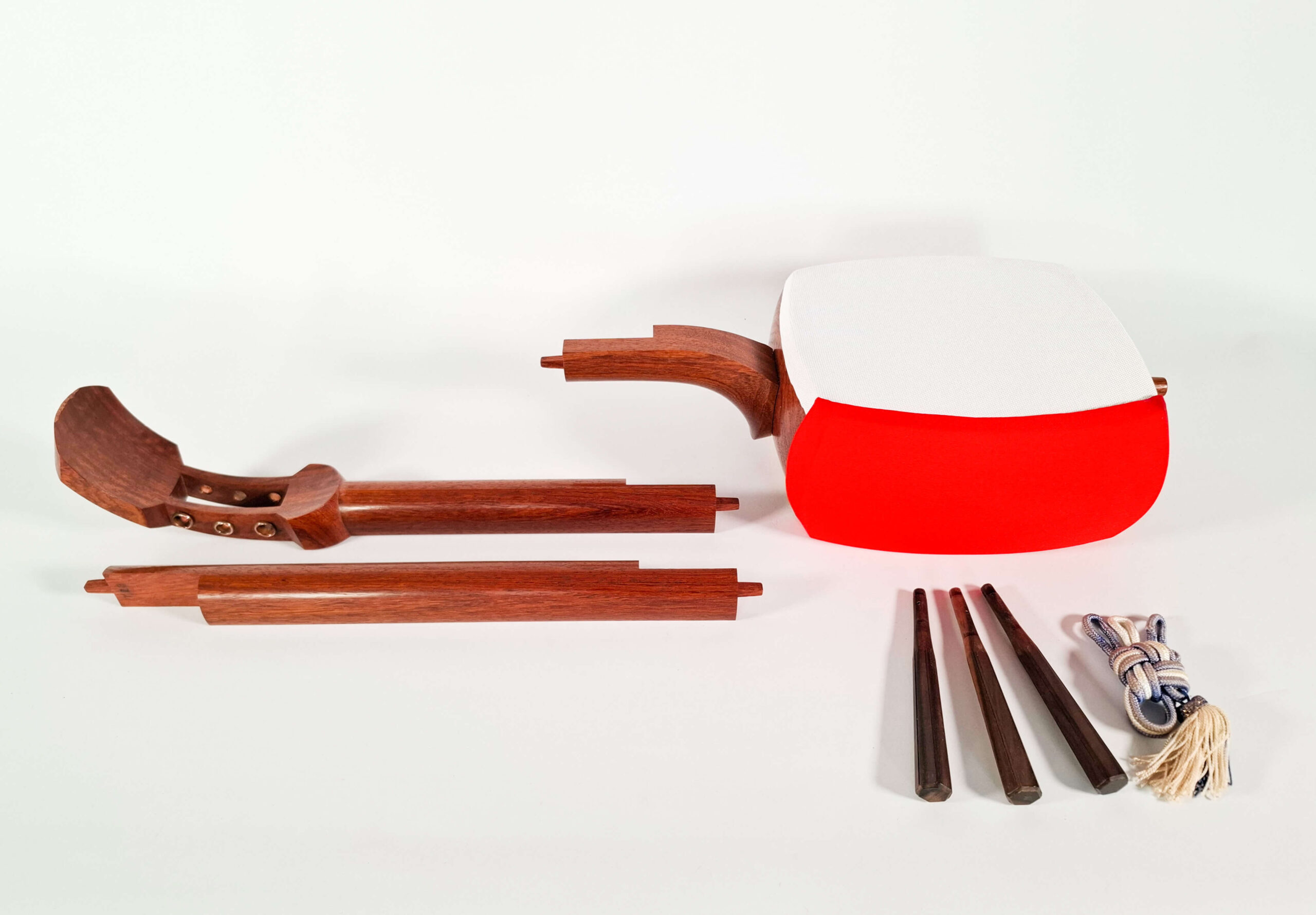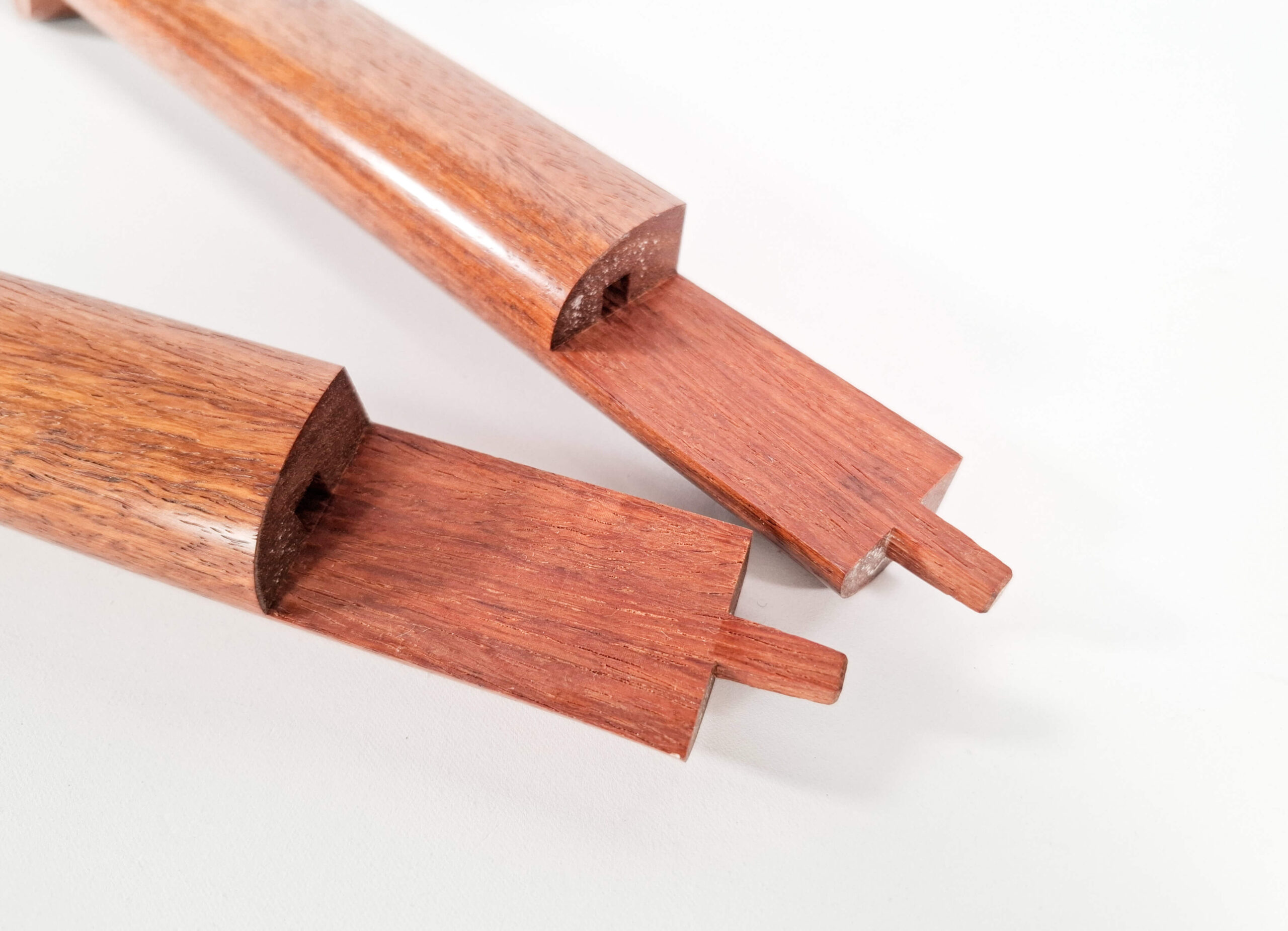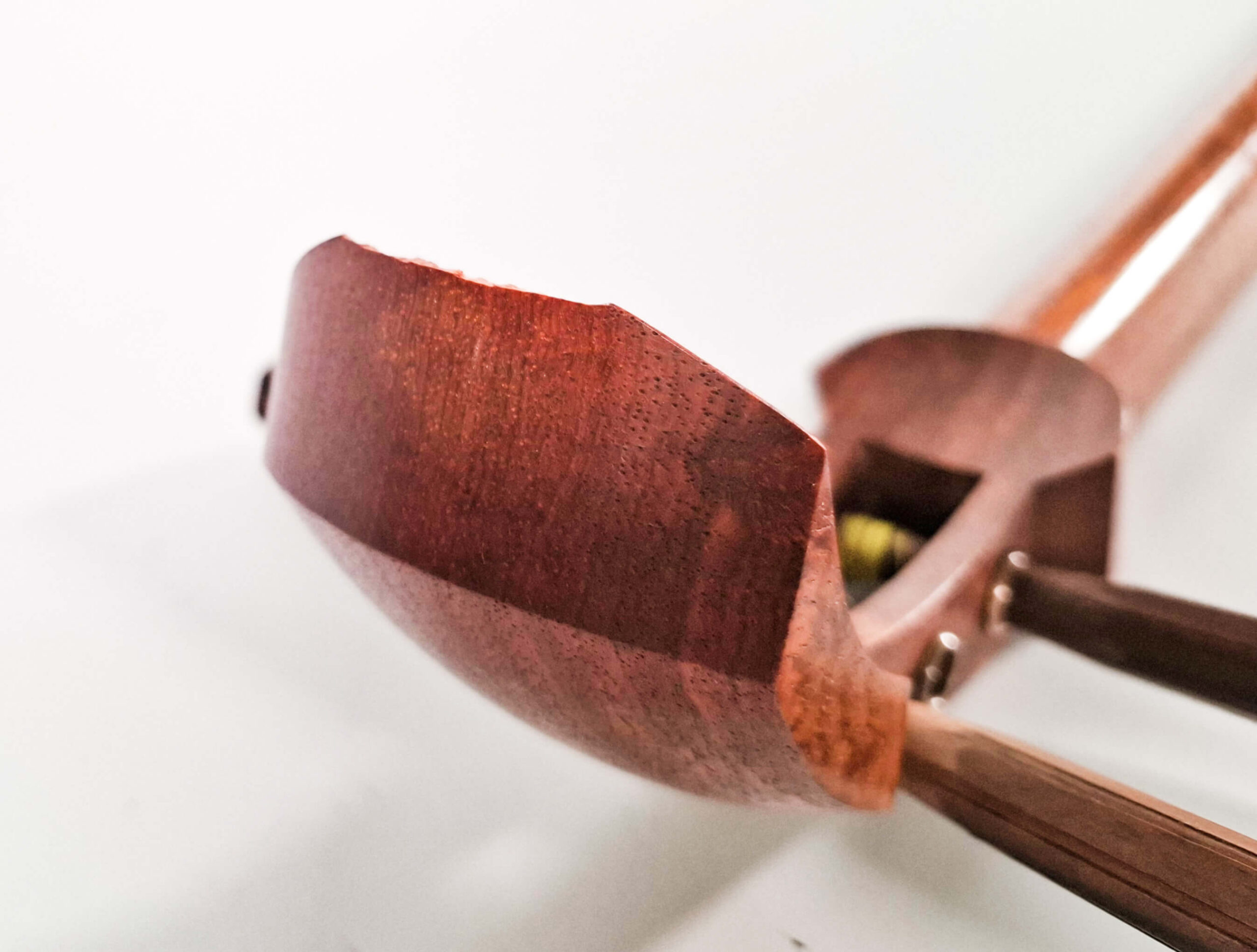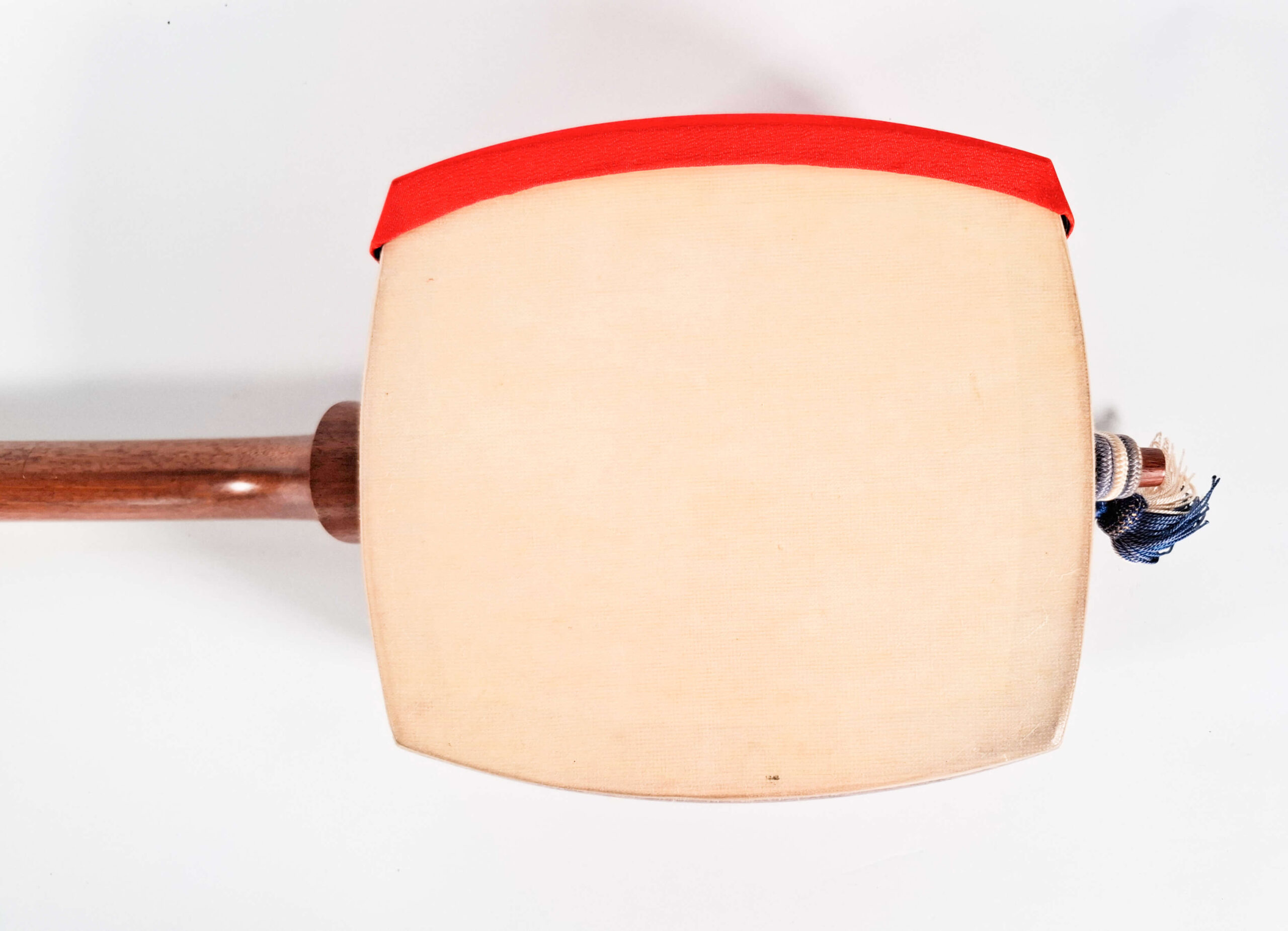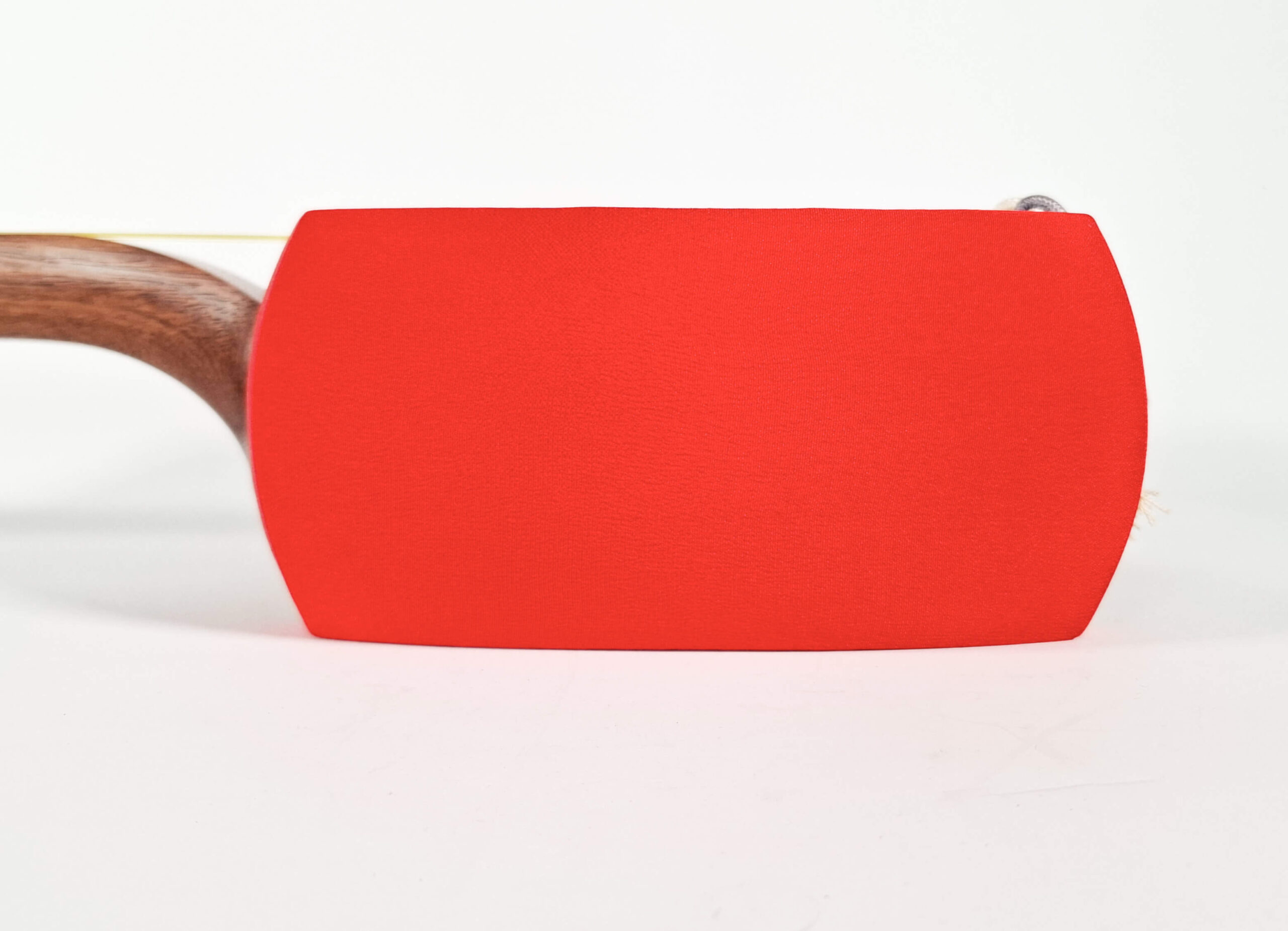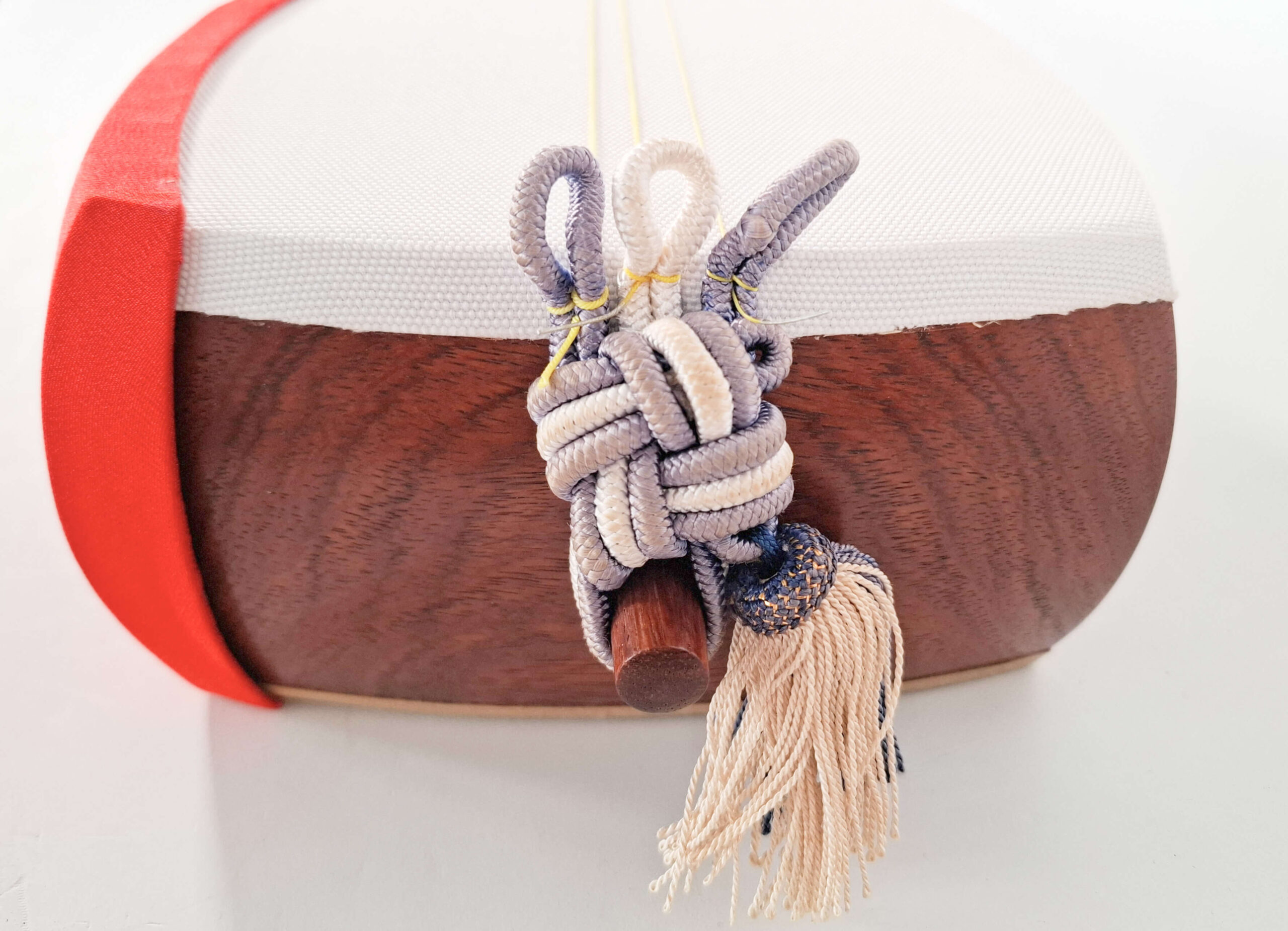Hosozao Beginner Shamisen Set “Kohana”
- hosozao shamisen
- sao width: 29 mm
- sao height: 29 mm
- fingerboard: 27 mm
- made from karin wood
- fresh hibiki synthetic front and synthetic back skin
also included in the set:
- neo
- doukake
- strings
- dougomu
- tenjin cap
619,00 €
Details
Gentle and charming, this shamisen wears the name “Kohana” (小花) — little flower. Small in stature, but vast in spirit — ready to brighten any musical landscape.
The instrument is in super good condition and a very good pick for people with medium sized hands and a small budget. The wood has an exceptionally beautiful, glowing grain. That would usually drive the price up, but thanks to a nick at the very tip of the head (see photos), you’re getting this beauty for a special discount!
The style of this shamisen is (hosozao), typically used for Nagauta, Kouta and Hauta playing style. Neck sizes vary within the building types. This one is on the far end of the wide size within its category and thus comfortable for medium sized hands, too.
Wood:
The instrument is made from karin wood – an established choice for beginner instruments. But wait, that’s not all. This is “tochi karin”, an especially beautifully figured kind of karin wood. Yes! Look at the pictures and get an impression of the gleaming sparkle that makes this kind of wood irresistible!
Accessories and Skins:
The instrument comes with a red doukake and a blue-and-white neo (string holder). Also included in the package is a set of fresh strings, and a tenjin cap! The dou is freshly skinned with hibiki synthetic skins on the front and has an older synthetic back skin.
Neck:
This neck is 29 mm high/thick at the top and widens slightly towards the dou. The fingerboard is 27 mm wide at the narrow end. The elegantly slanted hatomune – the part where the neck enters the sound box – is typical for hosozao shamisen associated with Nagauta style. You can play up to position 19 with this kind of neck.
Itomaki:
The itomaki (tuning pegs) are made from ebony wood and are carved in a traditional way that makes them easy to grip despite their slender built.
More:
The tsukigata (the curved end of the tenjin) hat a nick! Booh! What happened? I don’t know! But what I do know is that the protective tenjin cap will cover and hide this past trauma. There’s zero impact on the instrument’s sound or quality. This is the most common accident that happens with shamisen, because the wood is thin and fragile at that part! The neck is crafted in mitsuori style: It can be separated into three parts. This makes travelling with the shamisen very easy – even if you have to get by with light and small luggage.
All you need to add to your set to start playing are a koma, a bachi and a yubisuri. Depending on the style you intend to play and your personal preferences, you want to pick a certain kind of koma and bachi. Yubisuri come in different sizes, and I didn’t want to deprive you of the difficult yet fun choice between all the wonderful colors. I also recommend getting an adhesive dougomu or a hizagomu that will prevent the instrument from slipping off your thigh.
If you need help with picking the right additions to this set, don’t hesitate to send a message and we will find the perfect match for you together.
If you have any further questions, reach out and send me a message and I’ll be happy to help.
